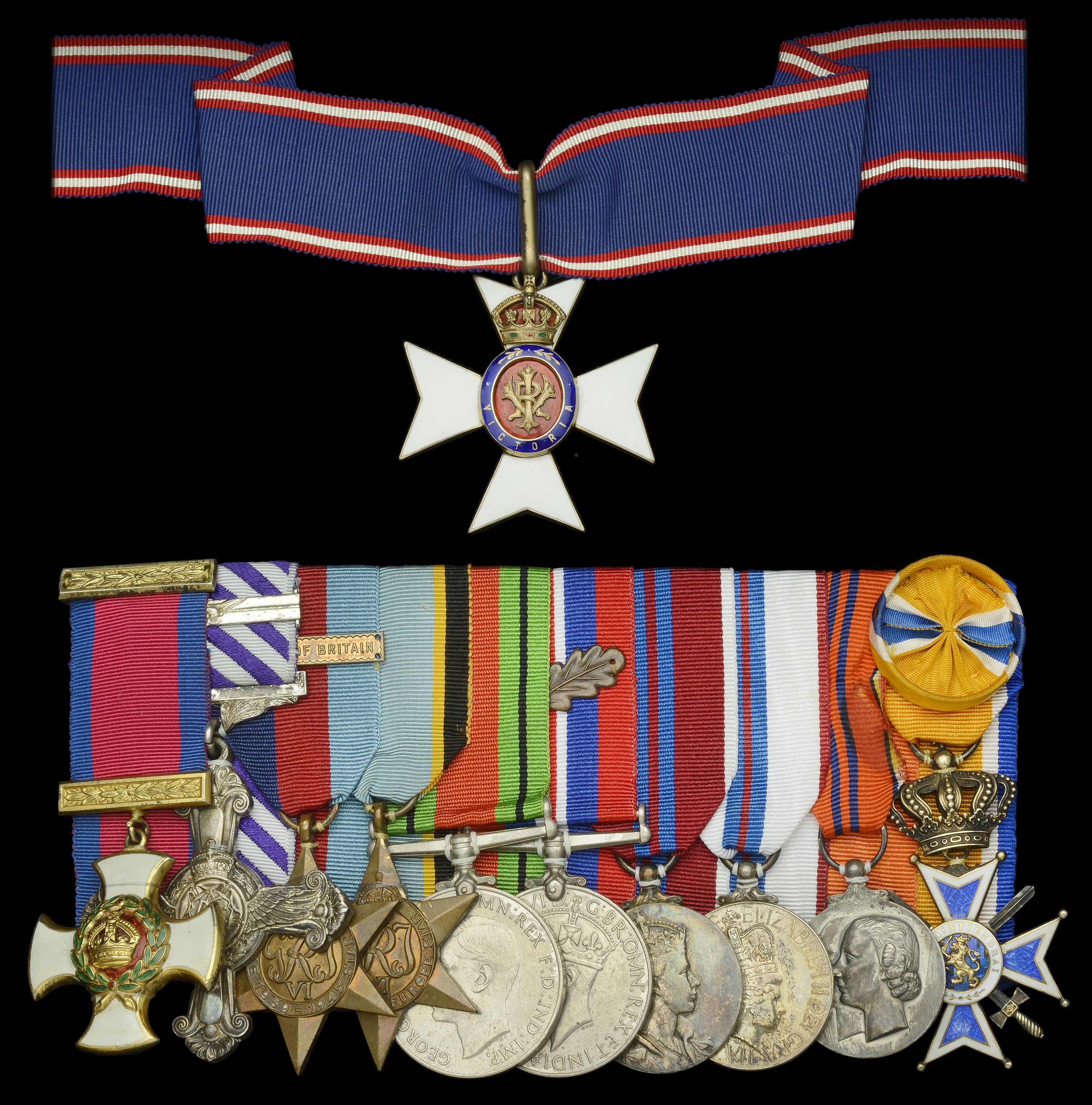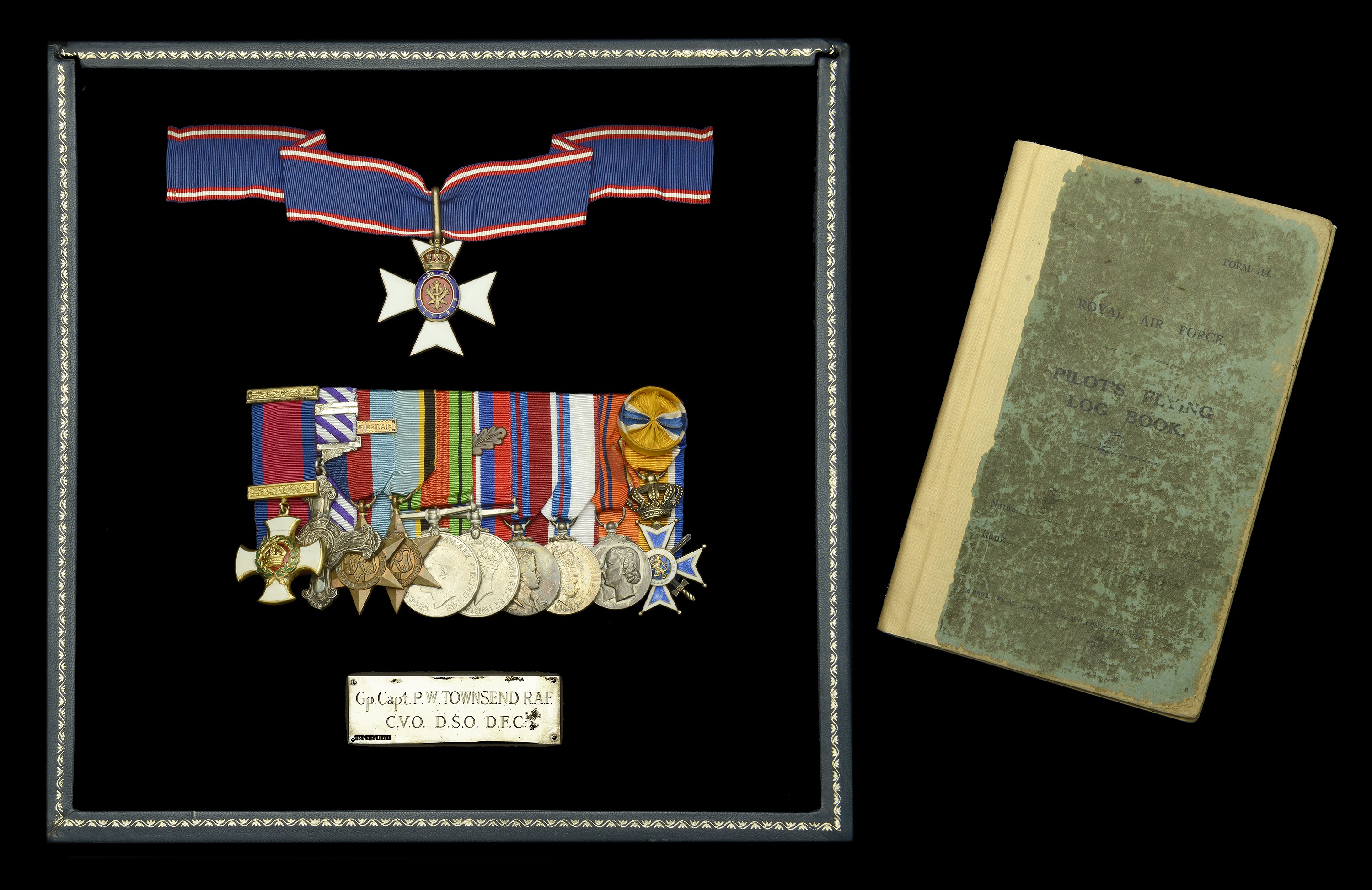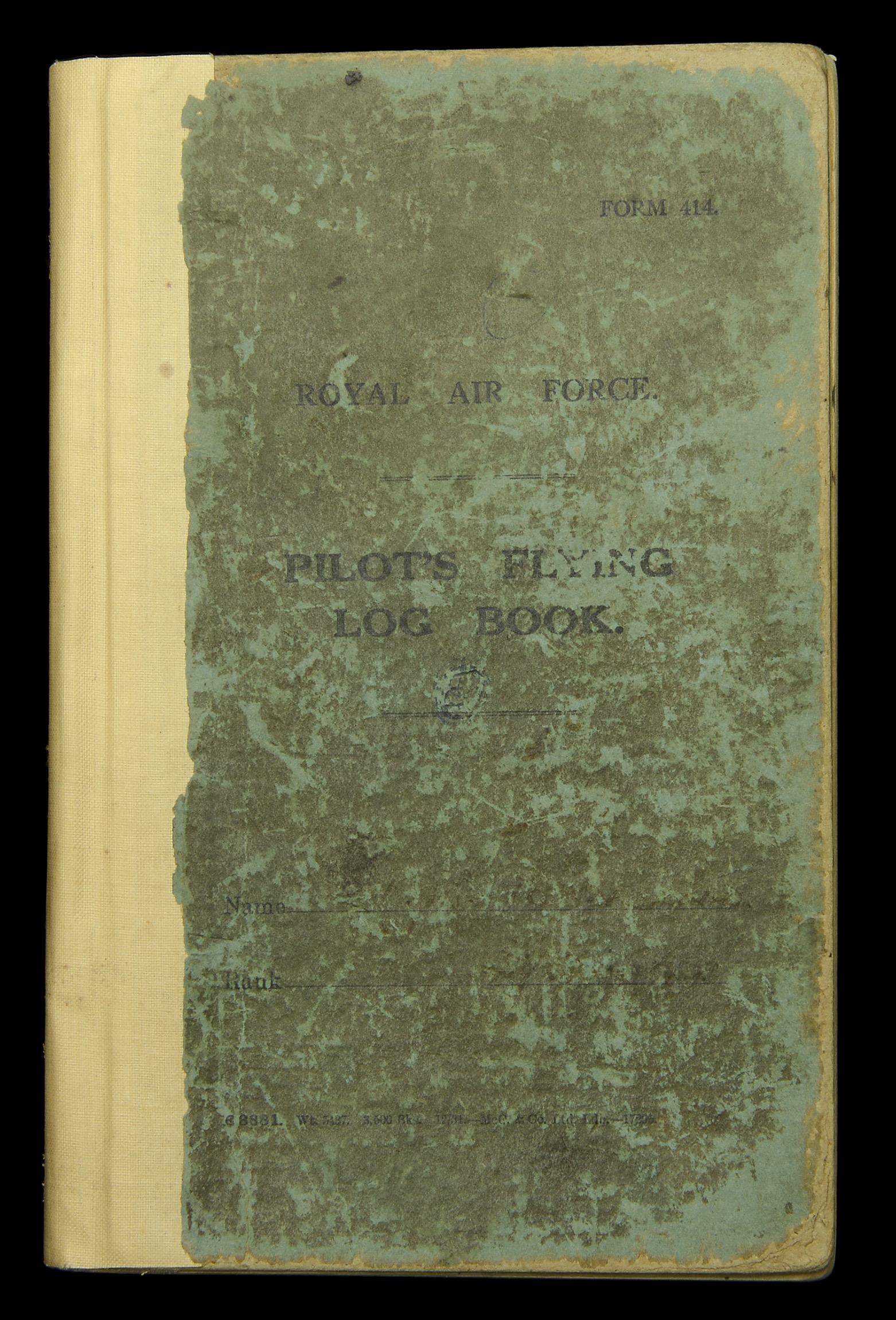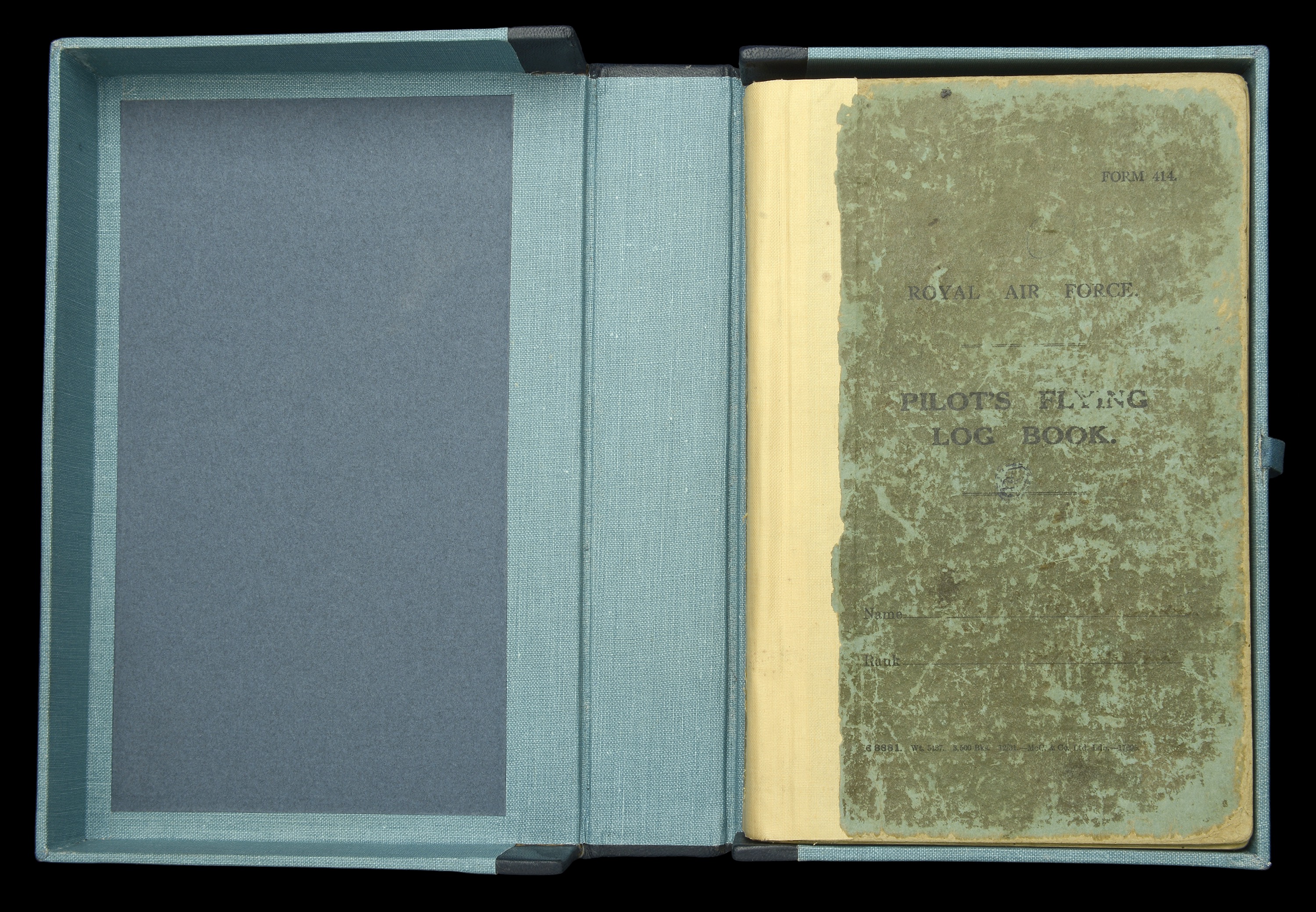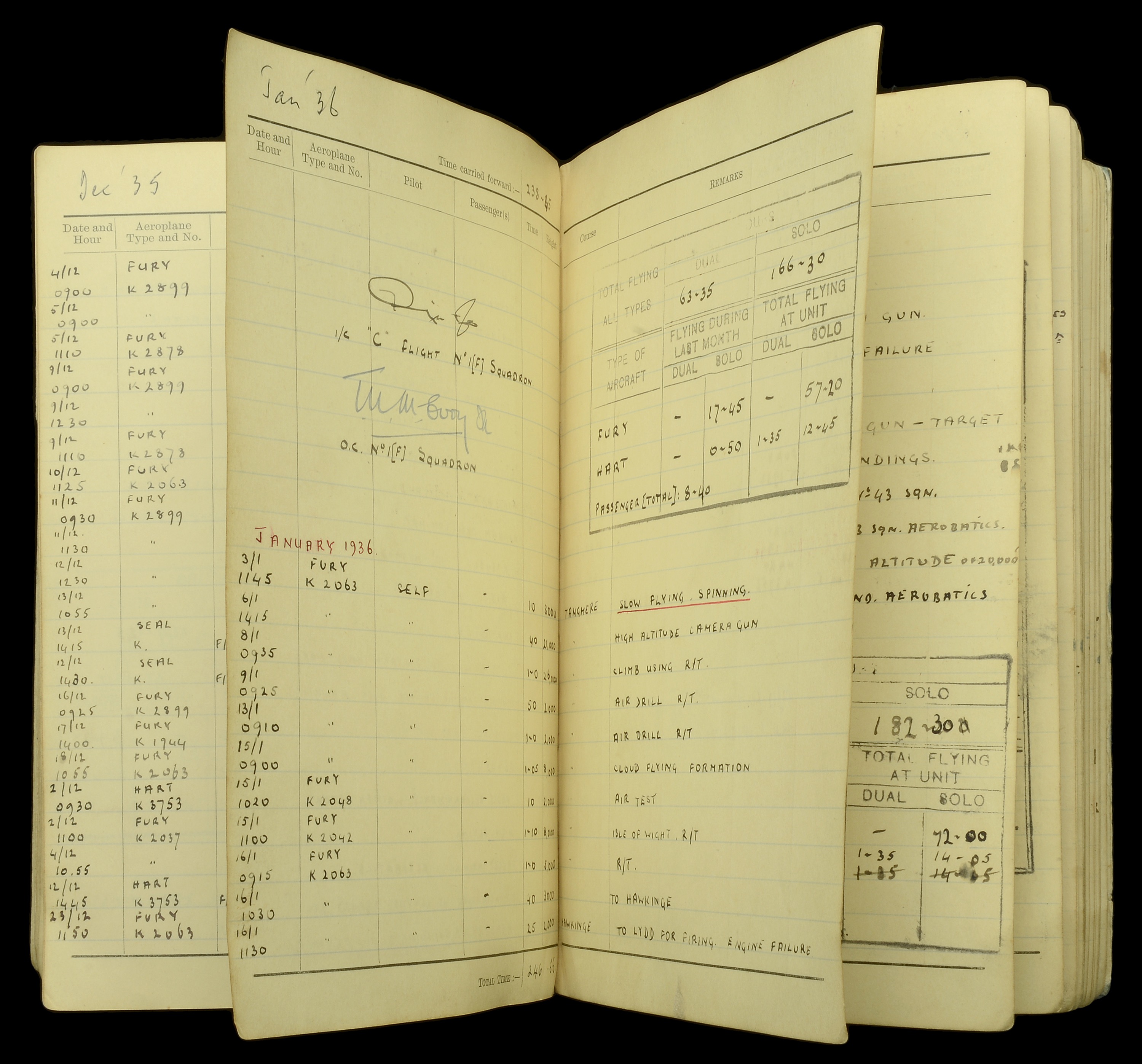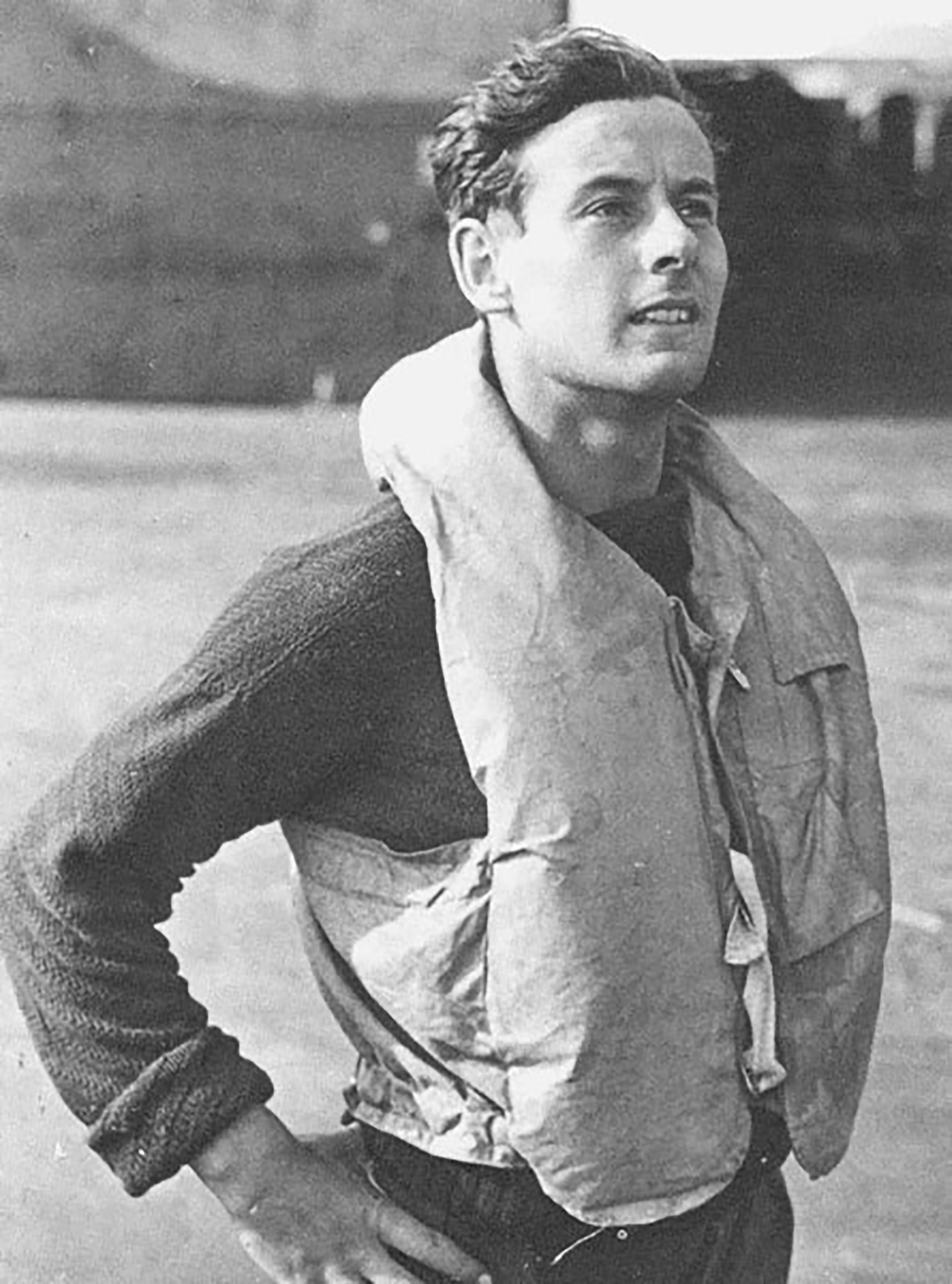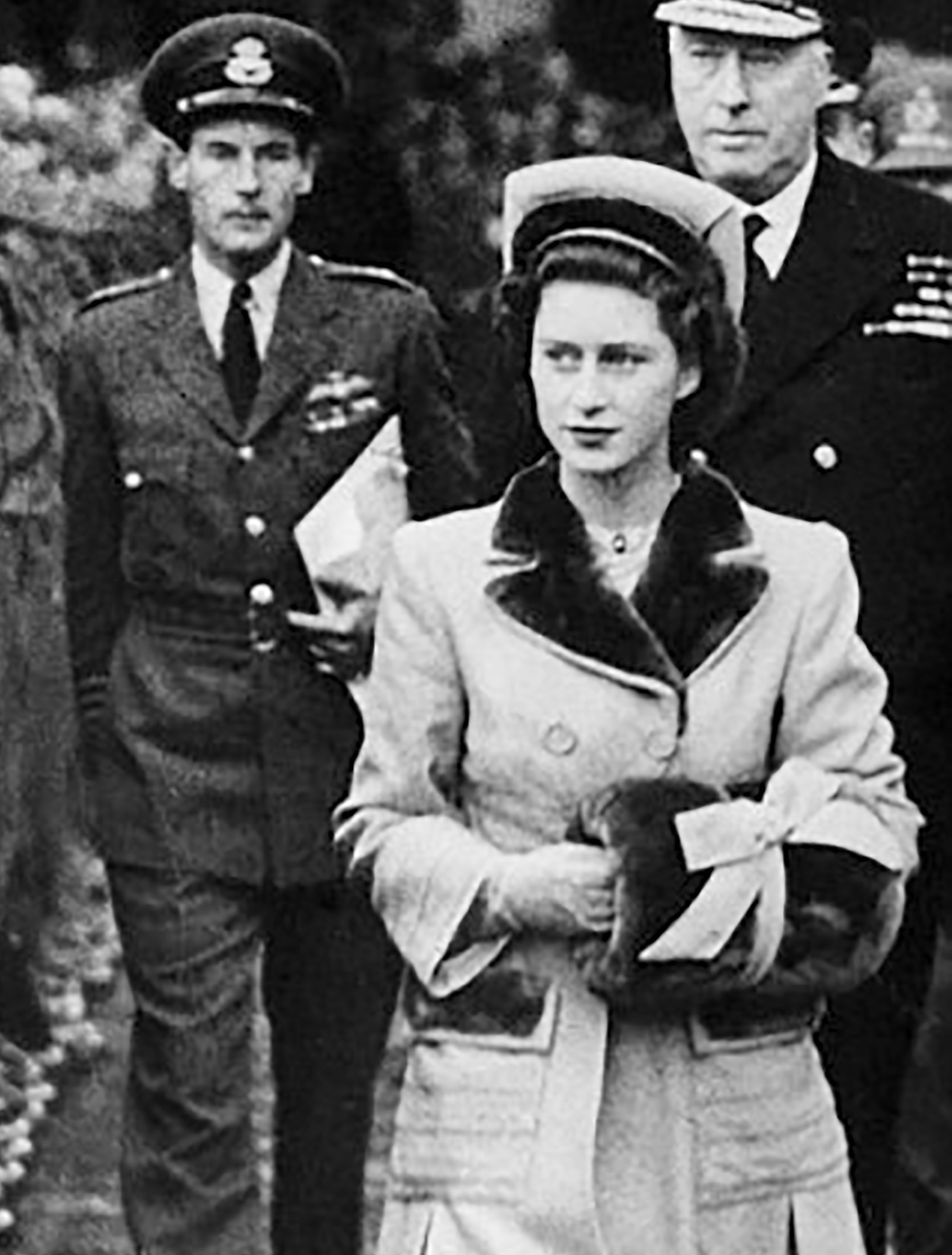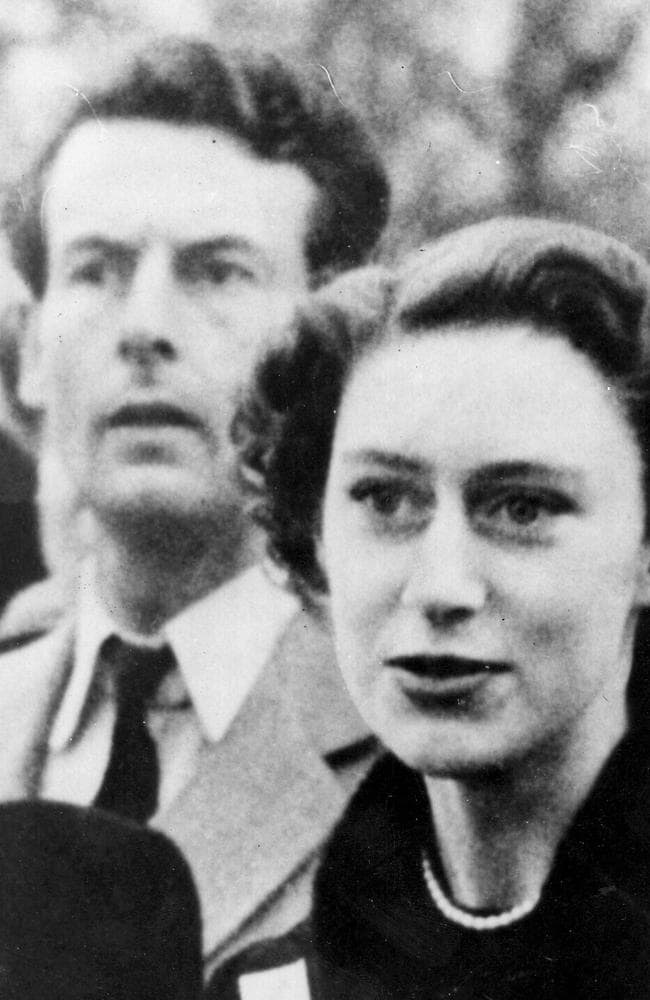The Important Battle of Britain fighter ace’s C.V.O., D.S.O., D.F.C. and Second Award Bar group of eleven awarded to Group Captain Peter Townsend, Royal Air Force, who in February 1940 became the first pilot to bring down an enemy aircraft on English soil, later commanding No. 85 Squadron from May 1940 until June 1941, a period that witnessed him completing over 300 operational sorties, twice taking to his parachute - once when wounded - and raising his score to at least eleven enemy aircraft destroyed. Appointed Equerry to H.M. King George VI in 1944, and Comptroller to the Queen Mother’s Household in 1953, his famously controversial and ultimately forlorn romance with the Queen’s sister, Princess Margaret, brought him further celebrity status to add to his spectacular wartime achievements. Turning his attention to writing, in later years he authored the classic Battle of Britain memoir ‘Duel of Eagles’ whilst his well regarded 1978 autobiography ‘Time and Chance’ tells the story of his eventful personal life. To be sold with the recipient’s original Flying Log Books, bound in one volume - with later annotation in his own hand - covering the entirety of his operational career. The Royal Victorian Order, C.V.O., Commander’s neck badge, silver-gilt and enamels, the reverse officially numbered ‘C1106’; Distinguished Service Order, G.VI.R., silver-gilt and enamel, the reverse of the suspension bar officially dated ‘1941’; Distinguished Flying Cross, G.VI.R., with Second Award Bar, the reverses of the Cross and the Bar both officially dated ‘1940’; 1939-45 Star, 1 clasp, Battle of Britain; Air Crew Europe Star; Defence and War Medals 1939-45, with M.I.D. oak leaf; Coronation 1953, unnamed as issued; Jubilee 1977, unnamed as issued; Netherlands, Kingdom, Queen Juliana’s Coronation Medal 1948; Order of Orange-Nassau, Officer’s breast badge, silver-gilt and enamel, with rosette on riband, breast awards mounted court-style in this order, and all housed in an attractive custom made glazed leather display case, with sterling silver plaque, engraved ‘Gp. Capt. P. W. Townsend R.A.F. C.V.O. D.S.O. D.F.C.’, last with enamel damage, contact wear overall but generally good very fine unless otherwise stated (11) £160,000-£200,000 --- Provenance: Sotheby’s, November 1988 (when titled as “The Property of the Recipient”); Dix Noonan Webb, December 2004. D.S.O. London Gazette 13 May 1941. The concluding paragraphs of the original three page recommendation state: ‘Acting Wing Commander P. W. Townsend, D.F.C., has been engaged in active operations against the enemy without respite, except for the very short period when he was wounded, since the outbreak of War. He has flown over 300 operational flights including 95 at night. During the Battle of Britain he led every patrol against the enemy except one and it will be noted that the Squadron total was excellent in comparison to its losses. This very light loss of pilots by No. 85 Squadron can only be attributable to the excellent, courageous and well thought out leadership of its Commanding Officer. No. 85 Squadron was the first Squadron in the R.A.F. to reach treble figures in conclusively destroying enemy aircraft. Though some of this number was destroyed before Acting Wing Commander Townsend took over command of No. 85 Squadron, the balance can without doubt be credited to the training, personal leadership and high devotion to duty of its Commanding Officer. Acting Wing Commander Townsend since taking over command of No. 85 Squadron has infused into his pilots and ground personnel a spirit of tremendous keenness and devotion to duty by his example and personal character. Apart from his ability as a leader he is a gallant, determined and courageous fighter. Acting Wing Commander Townsend in all has destroyed eleven enemy aircraft, probably destroyed three, as well as damage others.’ D.F.C. London Gazette 30 April 1940. The original recommendation states: ‘On the 8 April 1940, whilst on patrol over the sea off the north east coast of Scotland, Flight Lieutenant Townsend intercepted and attacked an enemy aircraft at dusk and after a running fight shot it down. This is the third success obtained by this pilot and in each instance he has displayed qualities of leadership, skill and determination of the highest order, with little regards for his own safety.’ D.F.C. Second Award Bar London Gazette 6 September 1940. The original recommendation states: ‘This officer assumed command of a Squadron after its return from France at the end of May 1940, and in a very short time, under his leadership and guidance, it became a keen and efficient fighting unit. On 11 July 1940, whilst leading a section of the Squadron to protect a convoy, he intercepted about twenty or thirty enemy aircraft, destroying one and severely damaging two others. The enemy formation was forced to withdraw. Under his command, the Squadron has destroyed eight enemy aircraft while protecting convoys against sporadic enemy attacks. On 18 August 1940, his Squadron attacked some 250 enemy aircraft in the Thames estuary. He himself shot down three enemy aircraft, the Squadron as a whole destroying many others. The success which has been achieved since Squadron Leader Townsend assumed command, has been due to his unflagging zeal and leadership.’ M.I.D. London Gazette 11 July 1940. Peter Wooldridge Townsend was born in Rangoon, Burma on 22 November 1914 and was brought home to be raised in Devon. Educated at Haileybury, he entered the R.A.F. College, Cranwell in September 1933, and graduated top of his entry, his first official posting being to No. 1 Squadron. In 1936 he transferred to No. 36 Squadron in Singapore, during which period he flew Vildebeest Torpedo Bombers - ‘a big biplane as ugly as its African namesake’ - but before the outbreak of hostilities, Townsend had returned to the U.K. and joined the “Fighting Cocks”, No. 43 Squadron. Within a very short space of time, he was to be wounded by cannon-shell, twice shot down, and awarded the D.S.O., D.F.C. and a Second Award Bar to his D.F.C. In fact, Townsend epitomised the very spirit of Churchill’s famous “Few” and rapidly became a household name. The sort of conditions under which Townsend achieved such fame are best summed up by the Royal Air Force Museum at Hendon’s description of a typical Battle of Britain pilot: ‘In 1940 he had total control of a 350 m.p.h. fighter but, no radar, no autopilot and no electronics. His aircraft was armed with eight .303 machine-guns (the same calibre as a soldier’s rifle). His opponent had cannon. His aircraft was unarmoured yet over 90 gallons of fuel was situated in front of his lap. He had no helmet or protective clothing, save a silk parachute. He had three seconds to identify his foe and little more to pull himself clear of the cockpit if hit. He could have been only nineteen years old.’ First Pilot to Bring Down a “Raider” on English Soil By the outbreak of war, Townsend was a Flight Commander but, like most of his contemporaries, without combat experience. In comparison to their Luftwaffe opponents, this was a serious shortcoming which would result in terrible casualties. However, the R.A.F. possessed its fair share of “natural aviators” and it was these men who rapidly asserted themselves during those bleak days of 1940. Among their ranks was Peter Townsend, who, following his very first combat, emerged with the envious accolade of having brought down the first German raider on English soil. The Heinkel III had fallen victim to his Hur...

















